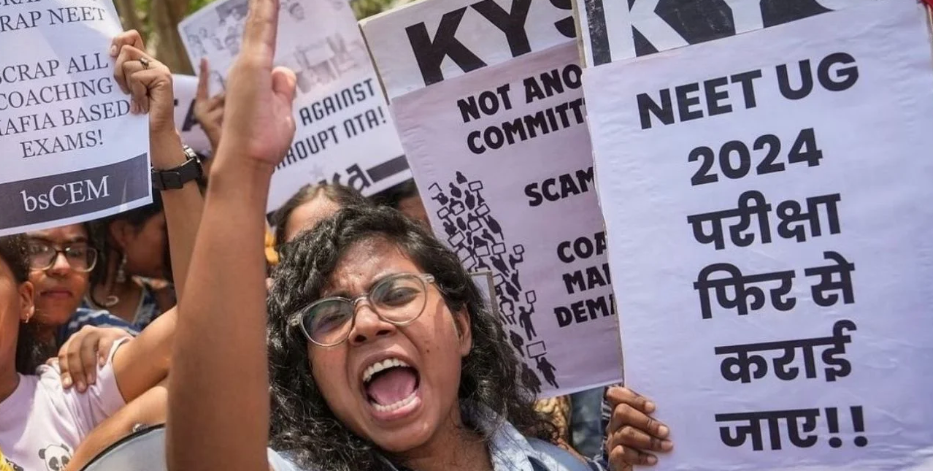The NEET Controversy (GS Paper 2, Governance)

Introduction
- The National Eligibility-Cum-Entrance Test (NEET) controversy in India has brought to light longstanding issues within the country's medical college admissions system.
- Managed by the National Testing Agency (NTA), NEET is the primary entrance examination for students aspiring to pursue undergraduate medical and dental courses across the country.
- This year, the examination faced significant challenges, sparking debates and legal interventions due to administrative errors and concerns over fairness.
The Controversy Unfolded
- The controversy erupted when over 1,500 candidates were affected by receiving incorrect question papers during the NEET examination.
- Initially, the NTA provided compensatory marks to offset the disadvantage caused by the error.
- However, these marks were later revoked, leading to confusion and protests among affected students and their families.
- The Supreme Court intervened following multiple petitions, urging the NTA to acknowledge the technical glitch and consider retesting options for affected candidates.
Criticism of the National Testing Agency (NTA)
- Established in 2017, the NTA is tasked with conducting various national-level entrance examinations, including NEET and the IIT Joint Entrance Examination (JEE).
- While the agency has successfully managed these exams in the past, its handling of NEET this year drew criticism from stakeholders and the judiciary.
- The Supreme Court remarked that the sanctity of the examination process had been compromised, reflecting broader concerns about transparency and accountability in conducting crucial exams that determine students' academic futures.
Supreme Court Interventions
- Petitions filed with the Supreme Court highlighted anomalies in NEET results, particularly the unusually high number of students achieving perfect scores.
- This year, 67 students scored the maximum marks, compared to significantly fewer in previous years.
- The discrepancy raised suspicions of arbitrary marking practices, prompting the NTA to initially attribute the high scores to the relative ease of the question paper.
- Subsequent explanations citing grace marks applied inconsistently to only a small fraction of top scorers further fueled skepticism and demanded clearer accountability from the NTA.
Challenges in Entrance Examinations and Higher Education
- The NEET exam's popularity has soared over the years, mirroring the increasing demand for seats in medical colleges across India.
- This year, more than 24 lakh students competed for fewer than 1,10,000 seats, underscoring the intense competition and the disparity between demand and availability.
- The high stakes nature of NEET has transformed it into a fiercely competitive elimination test, where only a minute fraction of candidates secure admissions to prestigious medical institutions.
Government Initiatives and Proposed Reforms
- In response to these challenges, the government has initiated discussions on reforming the educational landscape, particularly in medical education.
- One proposed reform is to conduct NEET examinations bi-annually, similar to the UGC's provision for university admissions.
- This approach aims to reduce the pressure on students and provide more opportunities for aspiring medical professionals to demonstrate their abilities.
Conclusion: Path Forward for Indian Higher Education
- As India navigates its journey towards becoming a developed nation, the quality and accessibility of higher education, especially in fields like medicine, remain critical.
- The NEET controversy underscores the urgent need for systemic reforms that prioritize fairness, transparency, and inclusivity in entrance examinations.
- By strengthening regulatory frameworks, enhancing examination procedures, and ensuring equitable access to educational opportunities, the government can foster a conducive environment for academic excellence and professional growth.
Conclusion
- Addressing these challenges requires collaborative efforts from policymakers, educational institutions, and stakeholders to uphold the integrity of India's educational system.
- By doing so, India can nurture a skilled workforce capable of meeting the demands of a rapidly evolving global landscape while promoting social equity and national progress.
- This comprehensive approach not only aligns with the aspirations of a developed India but also safeguards the interests and aspirations of its future generations.


